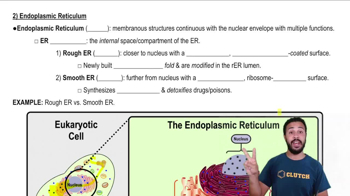A cell stimulated to increase its steroid production will have abundant:
a. Ribosomes
b. Rough ER
c. Smooth ER
d. Golgi apparatus
e. Secretory vesicles
 Verified step by step guidance
Verified step by step guidance Verified video answer for a similar problem:
Verified video answer for a similar problem:



 3:45m
3:45mMaster Introduction to Eukaryotic Organelles with a bite sized video explanation from Bruce Bryan
Start learning